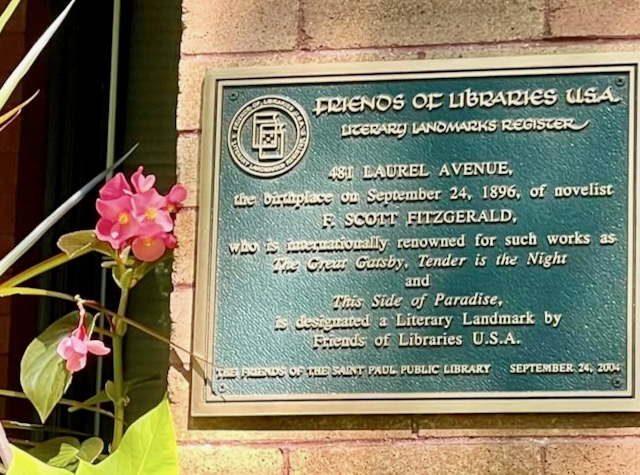We were in the Twin Cities for a few days, and this coincided with my just having reread The Great Gatsby, so I was inspired to check out the area in St. Paul where F. Scott Fitzgerald spent a good portion of his youth. And while I was at it, I was inspired to see something of where some of Minnesota’s other great writers lived or worked.
So the first thing to do if you find yourself in the same boat, is to check out the St. Paul neighborhood known as the Historic Hill District, a neighborhood that was made a part of the National Register of Historic Places in 1976 This area include the eastern part of Summit Avenue, known for being the longest avenue of Victorian homes in the U.S. It starts just west of downtown St. Paul and extends four and a half miles westward, and comprises more than three hundred and fifty well-preserved homes from the later nineteenth and early twentieth centuries. The historian Ernest R. Sandeen considered Summit Avenue to be “the best preserved example of the Victorian residential boulevard.” On the other hand, Frank Lloyd Wright called Summit Avenue “the worst collection of architecture in the world,” mainly because it simply copied design styes from Europe and didn’t do anything new. Fitzgerald himself agreed, calling Summit Avenue “a mausoleum of American architectural monstrosities.” But take a walk there and decide for yourself.

If you park your car on the 500 block of Summit Avenue (which is actually possible, if you can find an open spot) you can leave it for a while and take a stroll around the neighborhood. The first home you’re going to want to look at is a group of row houses comprising 587-601 Summit Avenue. These homes, known as “Summit Terrace,” were designed by William H. Willcox and Clarence H. Johnston, with a “New York Style” in mind. Fitzgerald’s parents moved to 593 Summit in 1914 while he was enrolled at Princeton University, then moved to the home at 599 summit, in this same group of row houses, in 1918. By 1918, Fitzgerald had flunked out of Princeton and joined the army. The war was over before he was deployed, but while stationed in Camp Sheridan outside of Montgomery, he had met his future wife Zelda. In 1919, After a fling at advertising in New York, Fitzgerald returned to St. Paul to finish his first novel. He did so in this house, at 599 Summit Avenue: This Side of Paradise made him famous. He lived in this house until January of 1920, when he moved to New Orleans. This house, being the one most associated with his writing career, is known as “The F. Scott Fitzgerald House” in St. Paul.
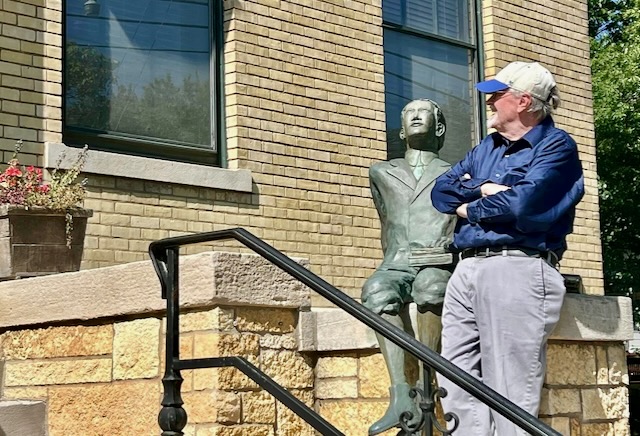
If you slip north around the corner from Summit to 25 North Dale, you’ll find the first building on your left is the former St. Paul Academy (a building now simply called “The Academy,” and the hone of law offices). Fitzgerald attended this school from 1908 to 1911, when he transferred to the Newman School in New Jersey. Take a look at the statue of the boy sitting on the steps with his schoolbooks in his lap. That’s intended to be the young Fitzgerald himself.
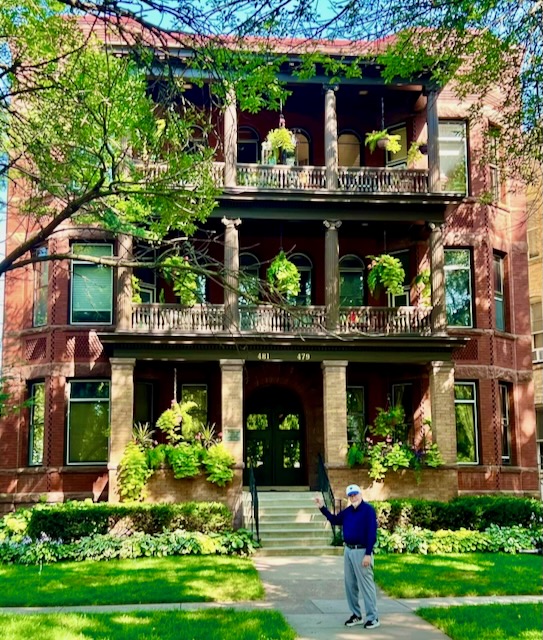
From here walk a few blocks north to Ramsey Avenue, and start walking east. After a few blocks you’ll come to a late Victorian apartment house at 481 Laurel Avenue. As the plaque in front of the building will tell you, it was on the second floor of this house that Fitzgerald was born on September 24, 1896, and where he lived until his family moved to Buffalo, New York in 1898.
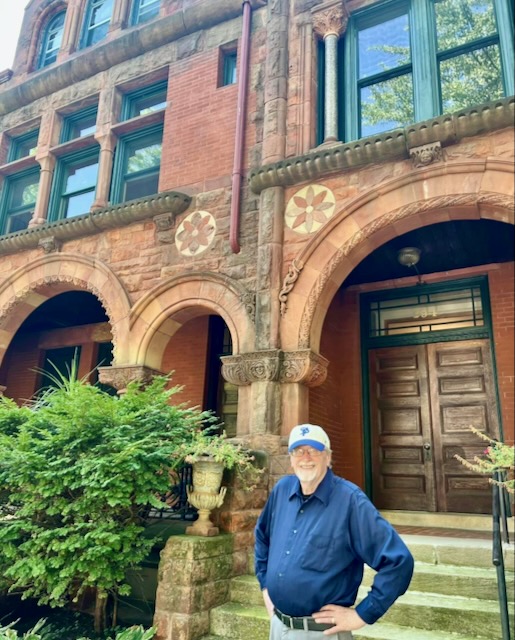
Keep going east about five blocks on Ramsey until you get to the 200 block. There you’ll find another complex of five row houses known as Laurel Terrace (also known as Riley Row), numbers 286-294 Laurel Avenue. According to the National Register of Historic Places, the building is “a rowhouse in Romanesque Revival style which unites a variety of materials and sculptural elements to achieve a uniquely distinctive facade within the historic district in which it lies.” It’s built of brick, sandstone and limestone, with columns of polished granite. The three-story structure was also designed by Johnston and Willcox, and the Art Historian Larry Millet calls it one of “finest Victorian row houses in the United States.” The Fitzgerald family lived in this complex in 1908 and 1909, after they had moved back from Buffalo. Fitzgerald would have lived here when he started school at St. Paul’s Academy.
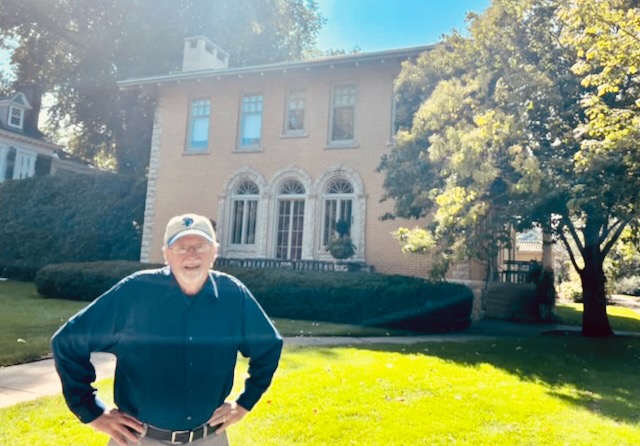
At this point you’ve exhausted the Fitzgerald sites in this neighborhood, so from here you can start to circle south back to Summit Avenue again, and start walking west back toward where you parked. A few blocks before you get back to your car you’ll find an attractive Italian-Renaissance house built in 1914 on the corner at 516 Summit Avenue, which should be of particular interest to you because for a short time it was the home of America’s first winner of the Nobel Prize for Literature, Sinclair Lewis. Lewis lived here in 1917 and 1918. The house was only three years old when Lewis leased it for six months and lived here with his first wife, Grace Livingstone Hegger, whom he had married in 1914. Here he wrote his early play Hobohemia and a few short stories, and planned a book about the railroad tycoon James J. Hill who had lived in a neighboring house at 240 Ramsey Avenue. The novel never came to fruition, but he had an idea for another novel about his home town of Sauk Center which, in another couple of years, would bring him fame and fortune as Main Street. But living here during the war was stressful, since the family had a German maid whom Grace refused to let go. and besides, as Grace said later, the house was more conducive to entertainment and parties than to serious writing. Lewis left early in 1918 for New York, intent on finishing Main Street.
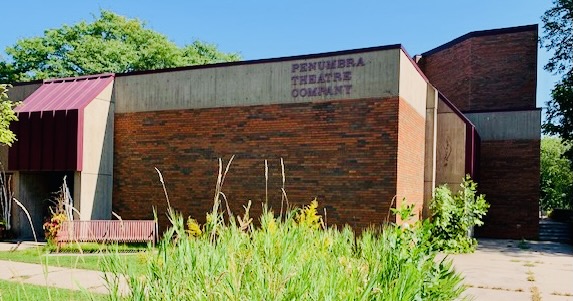
What you can do once you get back in your car is to drive a few minutes to the Penumbra Theater of St. Paul, part of the Martin Luther King community center at 270 North Kent Street, closely identified with a third writer of real significance associated with the Twin Cities: the playwright August Wilson. Known particularly for his famous Century Cycle set for the most part in the Hill District of his native Pittsburgh, Wilson was convinced by his friend, the director Claude Purdy, to move to St. Paul in 1978. In St. Paul, he began writing educational scripts for the Science Museum of Minnesota, but later began working with the Penumbra Theatre company of St. Paul. Two of his plays, Black Bart and the Sacred Hillsand later Jitney! (the first of his Century Cycle, set in the 1970s) premiered on the Penumbra stage. In St. Paul, he wrote several more of his Century plays, including Ma Rainey’s Black Bottom (1984, set in the 1920s), Fences (1985, set in the 1950s), Joe Turner’s Come and Gone (1986, set in the 1910sd) and The Piano Lesson (1987, set in the 1930s). When in 19897 Fences won both the Tony Award for Best Play and the Pulitzer Prize for Drama, St. Paul’s mayor declared May 27 “August Wilson Day,” celebrating the only Minnesotan ever to win a Pulitzer Prize for Drama. Wilson left St. Paul in 1990 after divorcing his second wife, and moved to Seattle. But if you want to see where Wilson essentially started the work that made him famous, you might try visiting the theater. Unfortunately, no one was there and the doors were locked when we stopped by on a Monday morning, but if you can arrange to be there when a performance is going on, being there could help you feel a part of history, especially if it’s one of Wilson’s plays, which I understand they still do sometimes.
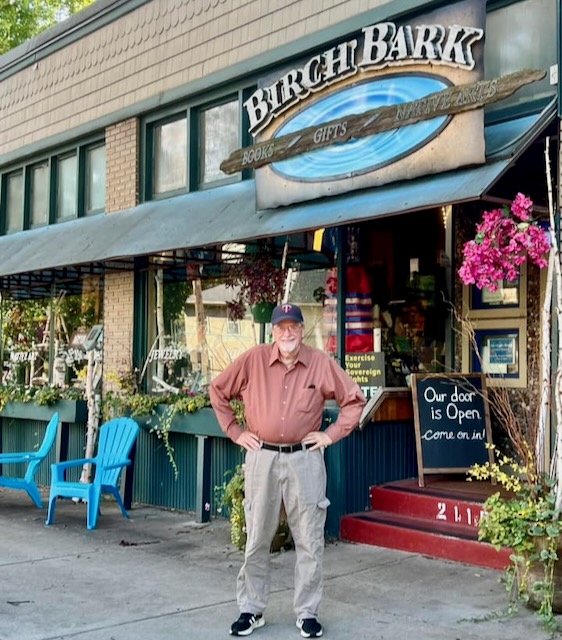
Before you leave the Twin Cities area, one more stop you might want to make is a visit to the “Birchbark Books and Native Arts” store a 2115 West 21st Street in Minneapolis. This is a small independent bookstore owned by Louise Erdrich—two-time winner of the National Book Critics Circle Award for Fiction (for Love Medicine in 1984 and for Larose in 2016), winner of the National Book Award for Fiction (for the Round House in 2012), and winner of the Pulitzer Prize for Fiction (for The Night Watchman in 2021). The store offers a god choice of new best sellers and classics, but in particular stocks a large variety of books on Native American history and culture, plus fiction by Native authors, including a significant number of all Erdrich’s own books, including author autographed copies. There are an interesting selection of Native arts in the store as well and some Native American language learning tools. Erdrich, an enrolled member of the Turtle Mountain Chippewa band. The store is intended to be a “teaching store,” and hosts literary events, including Erdrich doing readings of her own new work. If you stop in, you might even find her there signing copies of her books: the staff there told me she pops in at least once a week, and they never can be sure when that will be. So stop here on your way out of town and get yourself one of Erdrich’s novels to enjoy when you get home. I know I did. And I didn’t stop at one.

